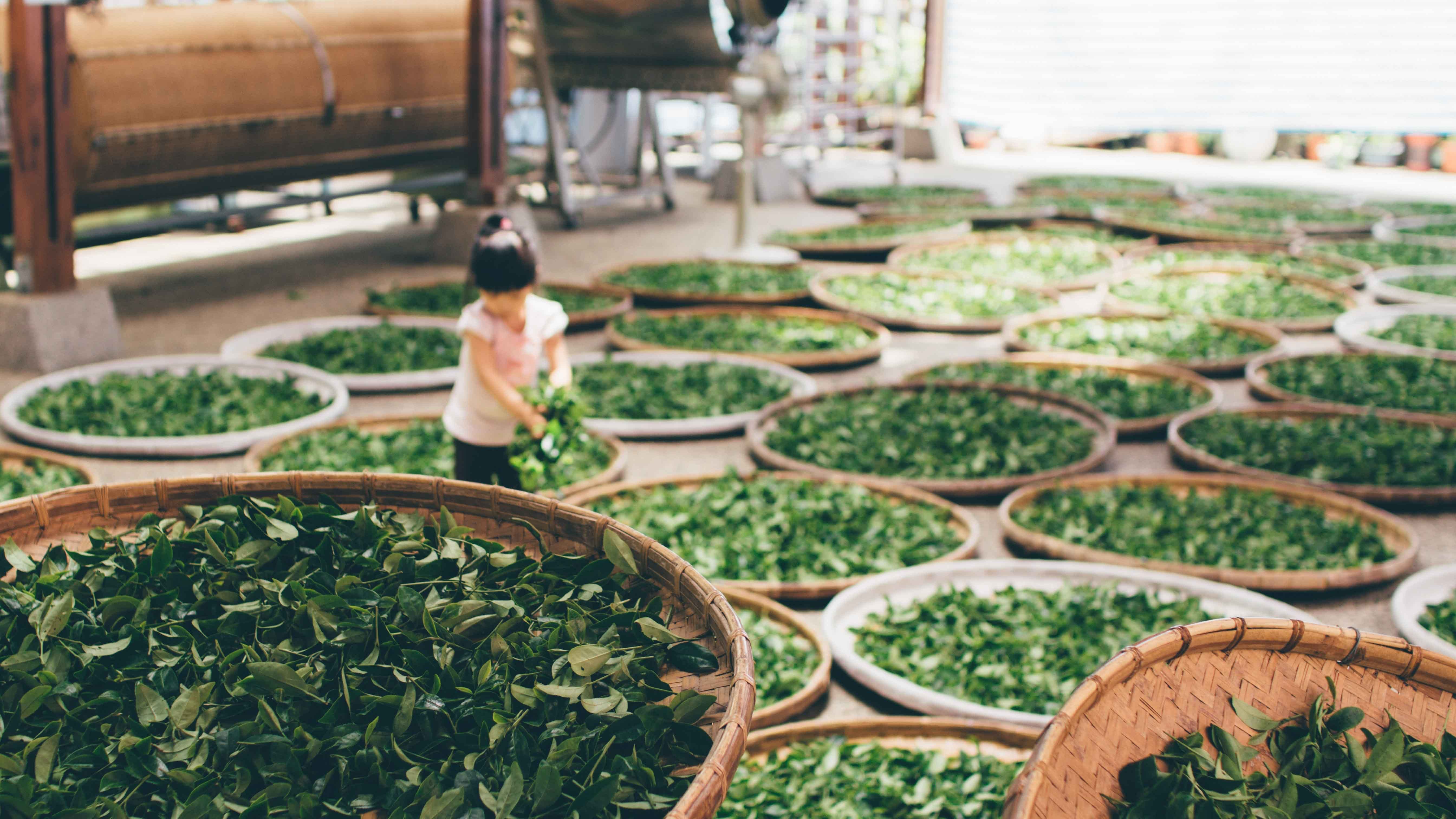The six main tea types: what are they and how are they made?
- Oct 4, 2021
There is no end to the world of tea. There is an endless amount of tea types and flavours to explore. Yet, all tea is made from the same plant: the Camelia Sinensis. How is it then, that every tea has a different flavour? Well, those flavours are created during the processing of the tea leaves. Did you know that all tea can be divided into six different main tea types? In this blog we’ll explain the difference between tea types and tell you why they are different.
The six tea types
- White tea
- Green tea
- Yellow tea
- Oolong tea
- Black tea
- Pu Erh tea
Rooibos and herbal tea do not originate from the tea plant and are therefore not called tea, but an ‘infusion’. The character of the tea types we mentioned is determined by the way the tea leaves are processed after they have been picked. Allow us to explain the differences.
White tea
White tea is the least processed type of tea. The leaves are picked when they are still young. The leaf pickers take the first, new buds from the tea plant. The tea is named after the white layer of fluff that the leaves have at this age. After they are picked, the leaves are slightly rolled up and dried. White tea is also known as the purest type of tea because the leaves are barely processed after they are picked.
Green tea
For the production of green tea, the fresh tea leaves are picked and immediately processed. To prevent oxidation, they are heated instantly after picking. Tea leaves contain certain enzymes which cause a chemical reaction when they are picked: Oxidation. Oxidation causes the green leaves to slowly turn black. This also changes the flavour and the aroma of the tea. By heating the tea leaves, oxidation does not take place. That’s how the green colour of the leaves is maintained and why this tea type is called green tea. After heating, the leaves are slightly rolled up and dried. The manner in which this last step is carried out determines the flavour of specific types of green tea.
Yellow tea
Yellow tea is made in almost the exact same way as green tea is made. However, yellow tea has one extra step. The Chinese call this final step “Men Huang” (steam yellow). The leaves are lightly steamed and then placed in a moist cloth. In a way, the leaves are stewed in this process. The moisture in the cloth causes the leaves to soak up their own aromas and this intensifies the flavour. Yellow tea is very rare and therefore you won’t find it in many tea stores. That’s because processing yellow tea is very labour intensive.
Oolong tea
Contrary to the other tea types, Oolong tea is made with the older leaves of the tea plant. After the leaves are picked they leave them to dry in the sun for a bit, after which they are dried at room temperature. The leaves are regularly shuffled. The leaves are heated to prevent oxidation. If you look at the way Oolong tea is processed, the process lies somewhere between green tea and black tea: Green tea is not oxidated and black tea is completely oxidated. The rate of oxidation for Oolong tea lies between 10% and 80%. The oxidation of the leaves varies and that determines the type of Oolong tea.
Black tea
When you don’t interrupt the oxidation process, you get black tea. Black tea is dark of colour because the rate of oxidation is very high. After the leaves are picked they are bruised, cut or broken to kickstart the oxidation process. By “damaging” the leaves, the oxidation process is sped up. When the leaves have fully changed colour they are rolled up and dried. Worldwide, black tea is one of the most popular tea types. It also has a higher amount of caffeine than any other type of tea.
Pu Erh
It takes longer to process Pu Erh tea than it does to process other types of tea. This is because Pu Erh leaves are ripened. Just like with yellow and green tea, the tea leaves are heated immediately after picking to prevent oxidation. Then the tea is pressed or rolled into a shape and dried in the sun. After that - sometimes years later - the dry leaves are steamed and wrapped in moist cloth to ripen. Because of the moisture the ripening process is put into motion. Special bacteria and yeast types cause the leaves to ferment. This is why Pu Erh tea is also called “aged” or “vintage”. This type of processing is how Pu Erh tea attains its unique earthly flavour.
Despite the fact that all tea types are made from the same plant, the flavours vary immensely because of the way the tea leaves are processed. The country of origin, the time when the leaves are picked and the way the tea is made also impact the flavour of the tea. Yet, these six flavours are very distinguishable in taste because each of them has a unique basic recipe. Now you know the long road these leaves have had to go to end up in your cup!
Are you looking for more tea inspiration? Read our other blogs!


